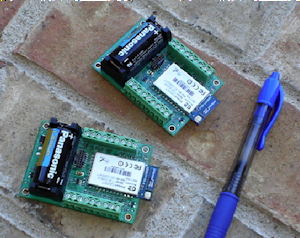Wireless sensor tags create an `instrumentation cloud`
A US company has developed a wireless sensor card that introduces a new concept for performing measurement and analysis, known as the “instrumentation cloud”. Cores Electronic’s Tag4M WiFi sensor tag no longer relies on software running on a specific PC. Instead, it transmits data the Internet and uses Web pages as “instruments” that can be accessed by any device that that can surf the Web, including mobile phones.

According to Cores’ president, Marius Ghercioiu, the tag “heralds a new way of collecting real-world data where we are throwing off the chains that bind us to specific hardware and software. Most wireless sensor units currently on the market are designed to work in local mode with a computer running a specific software application. In contrast, we designed the Tag4M to interface with a Web page, which can be hosted on any Web-enabled hardware, whether in your pocket or across the country.
“Everything except the physical I/O will take place on the Web,” he adds. “Logging measurements into a database, performing analyses, or displaying the data, can all take place independent of specific hardware. In this way, we are starting to think about an ‘instrumentation cloud’ where not only the sensors, but also the logging, analysis and control programs, can be anywhere you want them.”
The credit-card-sized tags are based on RFID (radio frequency identification) technology. They not only collect analogue data and perform digital I/O, but also communicate with any WiFi access point or wireless router.
The tags incorporate 32-bit RISC processors and 64kbytes of memory, allowing them to be used as embedded machine controllers running small control programs directly, or in response to commands from larger programs resident on the Internet. Also built in are a temperature sensor, five voltage/current input channels, and four digital I/O lines that can control relays or other devices needing TTL-level on-off signals.
The tags are powered by a lithium battery that can operate for up to two years, depending on the application. When transmitting, the tags draw about 200mA, but in “sleep” mode, the consumption drops to less than 10µA. The WiFi radio chips have a range of 50m indoors and 100m outdoors. Future WiMax versions will have longer ranges.
Texas-based Cores Electronic was set up by former employees of National Instruments. The tags are being sold in the UK by Adept Scientific, with prices starting at around £100.





